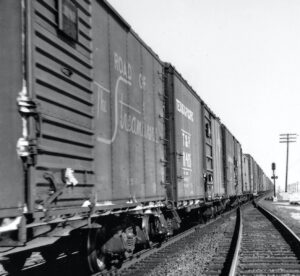 During the summer of 1964, I worked at Meredith Farm, Topsfield, MA. During the 1950s and 1960s, Meredith was the leading Ayrshire herd on the East Coast, and only rivaled by the famous Oak Ridge herd owned by the LaFranchi Brothers at Calistoga, CA.
During the summer of 1964, I worked at Meredith Farm, Topsfield, MA. During the 1950s and 1960s, Meredith was the leading Ayrshire herd on the East Coast, and only rivaled by the famous Oak Ridge herd owned by the LaFranchi Brothers at Calistoga, CA.
I was 18 years old at the time and had completed my Freshman year at the University of Minnesota. I arrived at Meredith on June 18, 1964 after a 36 hour bus ride from St. Paul. For the next six weeks I worked with heifers scheduled to be sold on August 1st at the Meredith Invitational Sale. In August, I began working with the show cattle.
For three previous summers, I had worked at Mor-Ayr Farm, Red Wing, MN owned by Dr. R.B. Graves. The herd manager of Mor-Ayr Farm was Jerry Strandlund who during his college days, had worked at Carnation Farms, Washington; Pineyhill Farm, New Jersey; Elmwood Farm, Illinois; and Hugo Albrecht in Minnesota. Jerry soon became one of my mentors and encouraged me to seek additional experience at well-known cattle farms.
Following the summer at Meredith, I spent the summer of 1965 in Lapeer, Michigan where I worked at E-L-V Apache Ranch owned by Eugene Vesely and managed by Kent Mattson. The E-L-V Apache Ranch show herd travelled by semi-trailer to the Michigan State Fair, The Pennsylvania All-American at Harrisburg, and Waterloo. It was while at Meredith Farm in 1964 that I had my “boxcar adventure.”
Meredith Farm was owned by David Lambert who was the owner of Essex Supply, a wholesale hardware supplier that had extensive business in New England.
The farm of 250 acres was a picturesque setting for the beautiful Ayrshire cattle that would graze the pastures. Unique to the farm was an indoor exercise pen where the herd could go and stretch their legs on cold New England days.
During the 1950s and 60s, Meredith showed six Grand Champion cows at Waterloo including Talisman Emerald S Trinket (1950), Sandy Springs Better Cheer in 1967 and again in 1958, and Sous L’Ombre Ideal Hyrondelle in 1963 and 1964.
Meredith Farm was managed by Arthur G. Clark, one of the finest men I have ever known. He came to Meredith in the 1950s from his native Maine and remained there until the Meredith herd was dispersed in 1968. Arthur Clark received the prestigious Klussendorf Award in 1955. Following the Meredith Dispersal, Arthur and his daughter developed their own herd of Ayrshires.
In 1964, the Meredith herd was shown at the New York State Fair, Syracuse; Pennsylvania All-American, Harrisburg; Eastern States Exposition, Springfield, MA; the National Dairy Cattle Congress in Waterloo and the International Livestock Show in Chicago. In 1964, Meredith Farm showed the Grand or Reserve Champion female at every show where we exhibited. At the Eastern States Exposition and the National Dairy Cattle Congress Meredith captured both the Grand and Reserve Grand Champion female banners.
I traveled with Arthur Clark and a man named “Shorty” Washington who worked the show circuit as a night line man. We traveled on the Rock Island Line by boxcar from Eastern States Exposition in Springfield, Massachusetts to National Dairy Cattle Congress in Waterloo, Iowa.
The boxcar was fitted while we were at the Eastern States Exposition. Charlie Blunt, a handyman at Meredith Farm, brought much of the necessary equipment from Topsfield to Springfield.
The boxcar measured 50 feet in length. There were four separate stalls for the cattle and a deck was constructed above the cattle to store feed and supplies. A water tank was also on the deck which operated by gravity flow. We had a gas-powered engine installed to power the milking machine. Unfortunately, the gas engine quit working on the first day of the trip and from then on the cows were milked by hand.
Chicago was our next stop. The Rock Island Railroad had a massive freight facility in Blue Island just east of Western Avenue at 127th street. The switch yard is situated directly south of Chicago in the gritty suburb of Blue Island, Illinois. This maze of railroad tracks is one of the most fascinating rail switch yards in the world. Nearly 100 trains plowed through Blue Island junction on a typical day, not counting the commuter trains and occasional freights on the overhead line. We had a layover of several hours before our car was switched to the line that took us into Iowa and on to Waterloo.
